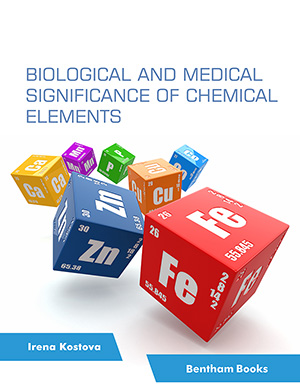Abstract
Background: Hypertrophic cardiomyopathy (HCM) is the most common inherited heart disease and is currently the leading cause of sudden death in adolescent athletes. Schisandrin is a quality marker of the traditional Chinese medicine Schisandra chinensis, which has an excellent therapeutic effect on HCM, but its pharmacological mechanism remains unclear.
Objective: This study aimed to explore the potential and provide scientific evidence for schisandrin as a lead compound against hypertrophic cardiomyopathy.
Methods: The drug-like properties of schisandrin were predicted using the SwissADME website. Then, the PharmMapper database was used to predict potential drug targets and match gene names in the Uniprot database. HCM targets were collected from NCBI, OMIM, and Genecards databases and intersected with drug targets. The intersection targets were imported into the STRING database for PPI analysis, and core targets were identified. KEGG and GO enrichment analysis was performed on the core targets through the DAVID database, and all network maps were imported into Cytoscape software for visualization optimization. HCM-related datasets were downloaded from the GEO database to analyze core targets and screen differentially expressed target genes for molecular docking.
Results: After the PPI network analysis of the intersection targets of drugs and diseases, 12 core targets were screened out. The KEGG analysis results showed that they were mainly involved in Rap1, TNF, FoxO, PI3K-Akt, and other signaling pathways. After differential analysis, PPARG, EGFR, and MMP3 targets were also screened. The molecular docking results showed that schisandrin was well bound to the protein backbone of each target.
Conclusion: This study used network pharmacology combined with differential expression and molecular docking to predict that schisandrin may treat HCM by acting on PPARG, EGFR, and MMP3 targets, and the regulatory process may involve signaling pathways, such as Rap1, TNF, FoxO, and PI3K-Akt, which may provide a valuable reference for subsequent studies.
Keywords: Schisandrin, hypertrophic cardiomyopathy, network pharmacology, differential expression, molecular docking, molecular mechanisms.
[http://dx.doi.org/10.1016/S0140-6736(12)60397-3] [PMID: 22874472]
[http://dx.doi.org/10.13729/j.issn.1671-7813.Z20200245]
[http://dx.doi.org/10.1038/nbt1007-1110] [PMID: 17921993]
[http://dx.doi.org/10.1002/cpz1.217] [PMID: 34370395]
[http://dx.doi.org/10.1038/srep42717] [PMID: 28256516]
[http://dx.doi.org/10.1093/nar/gkx374] [PMID: 28472422]
[http://dx.doi.org/10.1093/nar/gkaa1100] [PMID: 33237286]
[http://dx.doi.org/10.1093/nar/gky1151] [PMID: 30445645]
[http://dx.doi.org/10.1007/978-981-16-5812-9_2]
[http://dx.doi.org/10.1093/nar/gku1055] [PMID: 25355515]
[http://dx.doi.org/10.1093/nar/gkaa1074] [PMID: 33237311]
[http://dx.doi.org/10.1093/nar/gkac194] [PMID: 35325185]
[http://dx.doi.org/10.1093/nar/gks1193] [PMID: 23193258]
[http://dx.doi.org/10.1093/nar/gkaa1038] [PMID: 33211854]
[http://dx.doi.org/10.16303/j.cnki.1005-4545.2020.08.20]
[http://dx.doi.org/10.1155/2021/5541753] [PMID: 34257806]
[http://dx.doi.org/10.1155/2021/8129512] [PMID: 34221090]
[http://dx.doi.org/10.1097/00005344-200412000-00010] [PMID: 15550788]
[PMID: 26131133]
[http://dx.doi.org/10.1016/j.pbb.2015.08.007] [PMID: 26264163]
[http://dx.doi.org/10.1161/ATVBAHA.115.305378] [PMID: 25675995]
[http://dx.doi.org/10.1097/01.mnh.0000441152.62943.29] [PMID: 24401788]
[http://dx.doi.org/10.1111/jcmm.12763] [PMID: 26762600]
[http://dx.doi.org/10.1152/ajpheart.00338.2011] [PMID: 21856923]
[http://dx.doi.org/10.3969/j.issn.1005-9202.2013.06.046]
[http://dx.doi.org/10.4070/kcj.2009.39.8.328] [PMID: 19949639]
[http://dx.doi.org/10.18565/cardio.2014.5.4-7] [PMID: 25177880]
[http://dx.doi.org/10.1161/CIRCRESAHA.107.164947] [PMID: 18323524]
[PMID: 29218105]
[http://dx.doi.org/10.1016/j.exger.2019.110743] [PMID: 31629801]
[http://dx.doi.org/10.1016/j.biopha.2020.111022] [PMID: 33378940]
[http://dx.doi.org/10.1016/j.phymed.2018.11.025] [PMID: 31005720]
[http://dx.doi.org/10.1007/s12265-010-9200-z] [PMID: 20577843]































